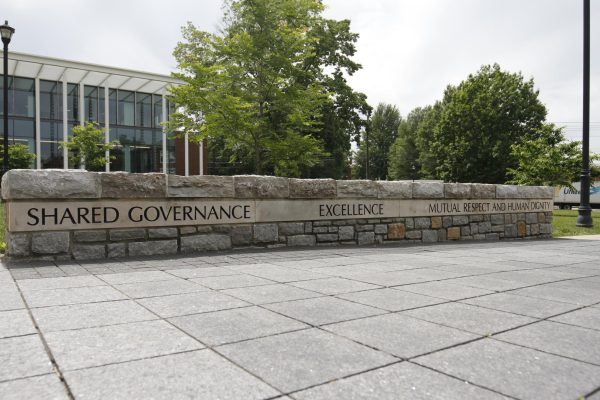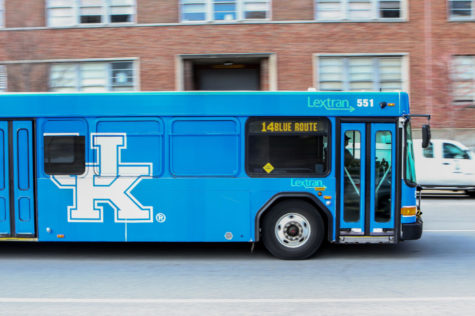Gerrymandering court case can affect Kentucky voters
October 20, 2017
Tuesday, Oct. 3, the Supreme Court began hearing arguments on a case that has the potential to change the way America votes.
The court case revolves around voter redistricting, specifically gerrymandering. The case itself is complicated. Talk surrounding the case is full of legal jargon, mathematical equations and computer algorithms.
Gerrymandering is the practice of redistricting along partisan lines. This is achieved by two different methods: cracking and packing. Cracking is the practice of splitting an opposing party’s voters into different districts to lessen the impact of their votes. Packing involves cramming voters of the opposing party into as little districts as possible to heavily concentrate their votes away from other districts.
After every census, states are required to redraw the legislative districts in order to make the voting districts more democratic, at least in theory. The redistricting, therefore, falls in the hands of the party in power in the state legislature. While the severity of gerrymandering varies from state to state, it is a common practice for legislatures to redraw districts in a way that is most beneficial to the majority party. It is expected, even.
In Gill v. Whitford, Democrats from Wisconsin brought a case against the Wisconsin Election Commission, arguing that current voting districts in the state were drawn to give Republican candidates an unfair advantage during elections.
In 2010, Republicans regained control of the Wisconsin legislature and had the task of redrawing districts following the census that same year. Using different resources, such as data and computer models, Republicans drew up a new map. In the two following elections, Republicans retained majority in the assembly. According to statistics from the Wisconsin Election Commission, in 2012, Democrats won a majority of the votes but only received 39 of 99 seats. Their Republican opponents won 60.
The plaintiffs in Gill v. Whitford argue that this was an example of gerrymandering. By using new technology and voter data, Republicans in Wisconsin were able to draw up a map that would essentially guarantee that Republican candidates would win. At the core of the case is the question: Is gerrymandering constitutional? The plaintiff argues that it is not, citing that Wisconsin’s partisan redistricting violated voters’ constituational rights under the first amendment and the Equal Protection Clause (part of the 14th amendment).
The Equal Protection Clause guarantees each individual “the equal protection of the laws.” The plaintiff argues that current legislative districts violate this clause because they essentially make democratic votes worthless in elections. At the same time, it is argued that gerrymandering in Wisconsin violates the first amendment by punishing democratic voters because of their affiliation with the party.
The defense argues that not only is gerrymandering constitutional but that it is a common and accepted practice. At the same time, the map drawn in 2010 is very similar to a map drawn in 2002 where Republicans won only a slight majority of the vote. The defense also questions the plaintiff’s legal right to challenge the map, because Whitford lives in a district where Democrats have historically won and therefore, is not affected by the alleged gerrymandering.
The Supreme Court must decide whether or not to uphold the lower court’s ruling that the Wisconsin Election Commission’s practices are unconstitutional. While there is no clause that explicitly states that partisan redistricting is unconstitutional or illegal, the court must decide whether it is a federal issue. Gerrymandering along partisan lines is an issue that has come to the Supreme Court in the past, but the court has never ruled against it. The one question that the court faces is this: can a measurement be devised that can be applied in all states that can determine a threshold where voter redistricting becomes gerrymandering, and therefore, illegal?
With the new lawsuit comes new technology, and many arguments and solutions have been put forth to the Supreme Court on the plaintiff’s part. Many are hopeful that this case will be strong enough to finally tip the court in favor of ruling against gerrymandering along partisan lines.
If the court upholds the decision in Gill v. Whitford, many states will have to answer for current legislative districts that fall under scrutiny. Kentucky will not be exempt. The state faces its own questionable legislative districts, and Fayette County is one of them. While nowhere near the extreme of Wisconsin’s districts, Kentucky still faces questions about how to redistrict each census in a bipartisan way.
The Kentucky League for Women Voters held a meeting about gerrymandering and redistricting Tuesday, Oct. 3, at the Lexington Public Library. 21st Senate district representative Albert Robinson (R) and 56th House district representative James Kay (D) spoke on the panel along with Kentucky League for Women Voters member Susan Weston. During the meeting, Weston admitted that, “Kentucky redistributing can be tangled. Counties are so polarized, it’s hard to draw lines that don’t skewer districts.”
The last time districts were redrawn in Kentucky, the legislature was controlled by the democrats. One idea surrounding gerrymandering today is that representatives are choosing their voters more than voters are choosing their representatives. When asked if he saw any truth to this statement, Representative Kay said, “I essentially think that’s what it is. The political class is trying to entrench themselves in power, and one very effective way to do that is gerrymandering.”
The Supreme Court is expected to rule on the case in June of next year.



















































































































































